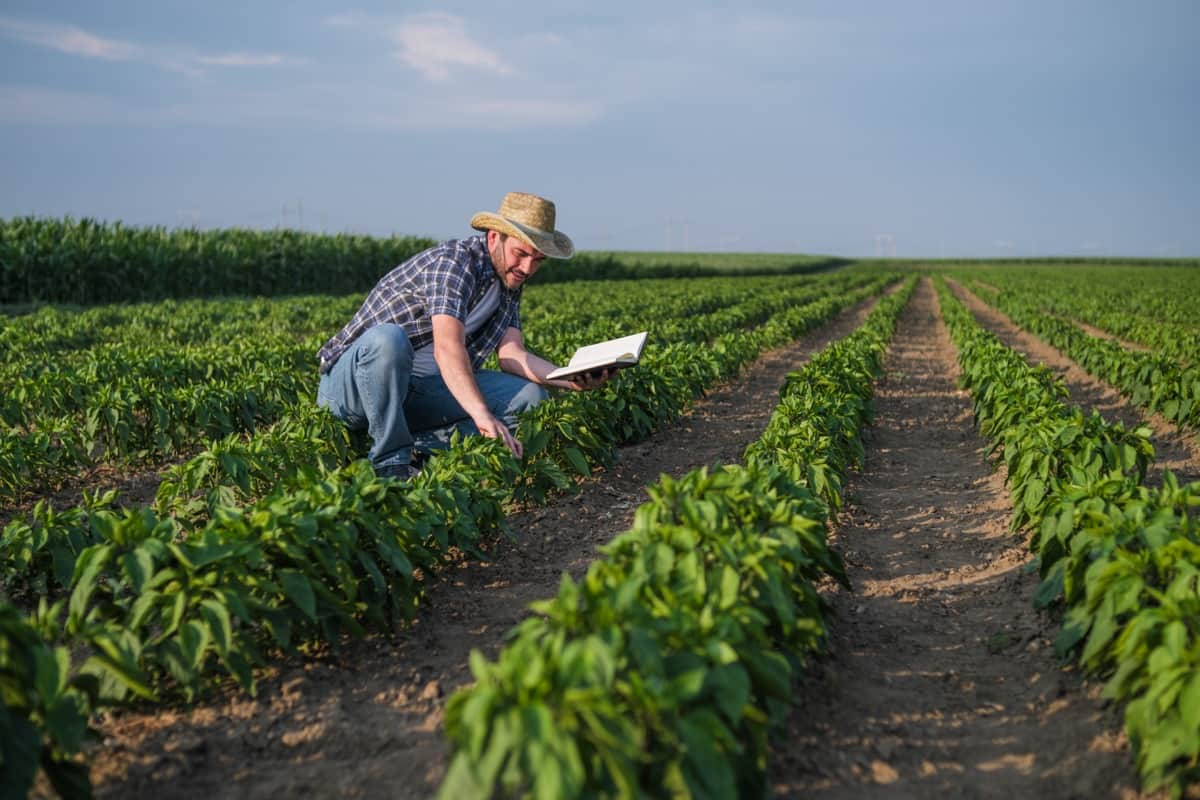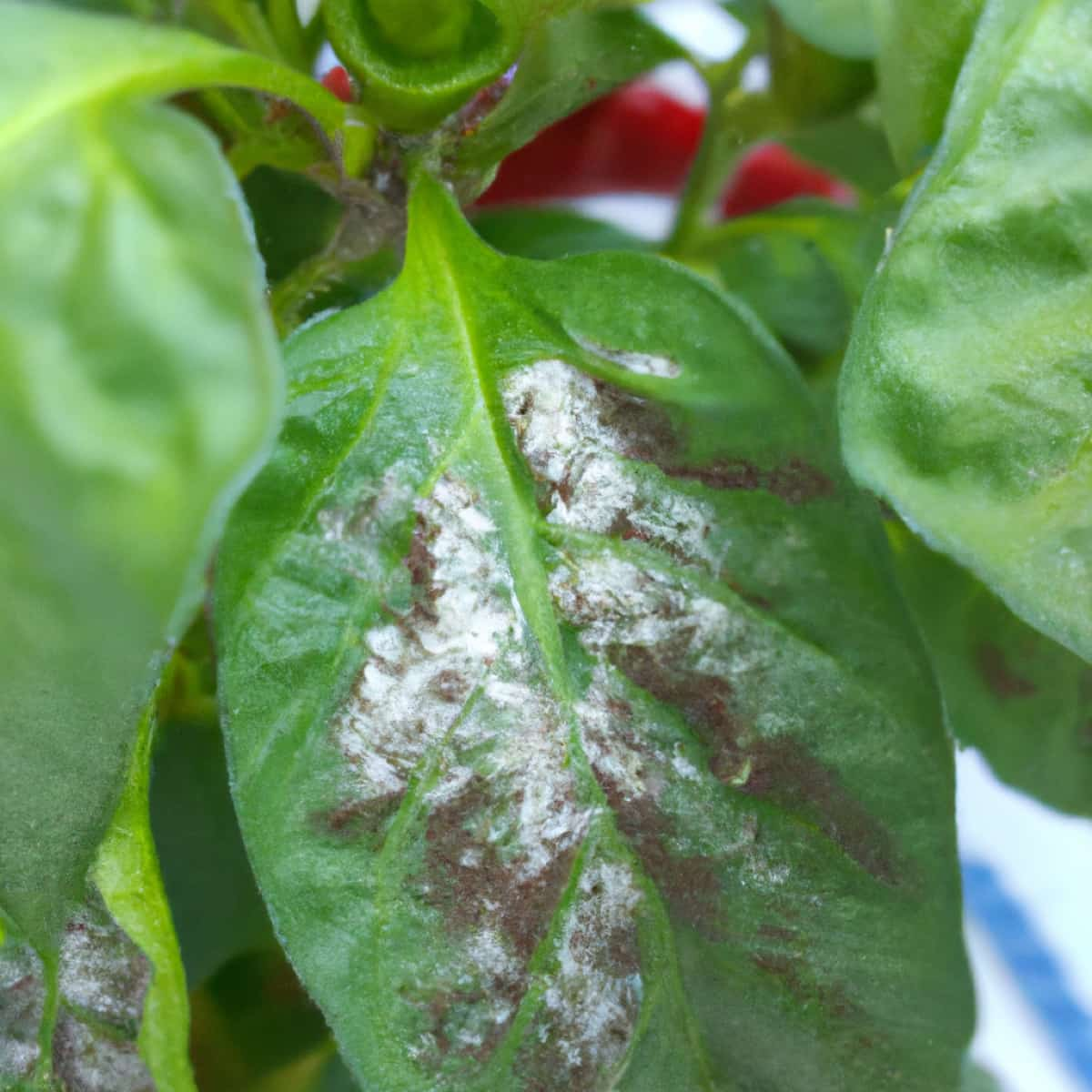Powdery mildew is a common fungal disease affecting many plants, including chili and peppers. The disease is caused by various fungi species forming a white powdery coating on infected plants’ leaves, stems, and flowers. This coating reduces the plant’s ability to photosynthesize, causing stunted growth and reduced yield.Chili is one of the most important vegetable crops globally. It is used extensively in various cuisines for its unique flavor and health benefits.

A combination of cultural, biological, and chemical controls is necessary for managing powdery mildew in chili. Planting resistant cultivars, keeping the appropriate spacing between plants, and avoiding overhead irrigation are all examples of cultural control practices. The use of beneficial microorganisms that compete with the pathogen for resources is at the heart of biological management. To prevent the development of resistant strains, fungicides, which are used in chemical control methods, must be used carefully.
Powdery Mildew Management in Chilli Pepper
Causes/Pathogen of Powdery Mildew in Chilli
Powdery mildew in chili is caused by a fungus called Leveillula taurica. The fungus survives in leaf buds and other plant debris during winter and is spread by wind, water, and insects to nearby plants. Unlike most fungi, powdery mildew can thrive in dry conditions.
The Disease Cycle of Powdery Mildew in Chilli
The powdery mildew disease cycle in chili starts with the landing of spores, called conidia, on a chili leaf. These spores germinate and grow into the leaf, using the plant as a food source. The fungus remains unseen within the leaf for an 18-21 day latency period. Then, it grows out of the breathing pores on the leaf’s underside, producing spores singly on numerous fine strands or stalks called conidiophores.
These fungal strands become visible as white patches or mildew colonies on the underside of the leaf. Repeated powdery mildew cycles can lead to severe outbreaks that economically damage the crop. This disease cycle continues as the spores are transmitted by wind, water, or insects to nearby plants, continuing the cycle of parasitization and spreading.
Conditions Favorable for Powdery Mildew Spread in the Field
Powdery mildew thrives at around 30°C, although it can survive in temperatures between 10-12°C. Unlike downy mildew, powdery mildew is spread by small amounts of rainfall and regular morning dew, accelerating its growth and spread in the field.
Damage Symptoms of Powdery Mildew
Leaves with powdery mildew have a white powdery covering on their undersides. Yellow patches may also be seen on the upper surface. Severe infections lead to the drying and shedding of affected leaves. Powdery growth may also be observed on branches and young fruits, causing the premature dropping of diseased fruits that do not grow further.
Yield Loss due to Powdery Mildew on Chilli
Powdery mildew caused by Leveillula taurica in chili can result in 14 to 20 percent yield losses due to severe defoliation and reduction in photosynthesis, fruit size, and number per plant. This disease is prevalent from November to February (winter).
In case you missed it: Cercospora Leaf Spot Management in Chilli Pepper: Symptoms, Identification, Treatment, Chemical, Biological, Natural, and Organic Control

Powdery Mildew Management in Chilli by Cultural Method
- Plant-resistant varieties of chili plants.
- Provide adequate spacing between plants for good air circulation.
- Water plants in the morning to allow leaves to dry during the day.
- Avoid overhead irrigation.
- Remove infected plant parts promptly.
- Disinfect tools after use to prevent the spread of the disease.
- Apply organic compost or mulch to improve soil quality.
- Avoid high nitrogen fertilizer as it can promote powdery mildew growth.
- Use reflective mulch to decrease humidity levels around plants.
Powdery Mildew Management in Chilli by Biological Method
Biological methods of powdery mildew management in chili plants involve natural predators, antagonistic microorganisms, and plant extracts. One effective biological method is the use of Bacillus subtilis. This naturally occurring bacterium can inhibit the growth of powdery mildew. Another method is using neem oil or extracts, which have antifungal properties. Predatory mites, such as Phytoseiulus persimilis, can also be introduced to control powdery mildew in chili plants. These mites feed on powdery mildew and can help reduce its spread.
Powdery Mildew Management in Chilli by Chemical Method
The choice of fungicide depends on the specific type of powdery mildew present and the stage of plant growth. Fungicides based on wettable sulfur, triflumizole, and myclobutanil are commonly used. Wettable sulfur at 0.25% or Dinocap (Karathane) at 0.05% can be sprayed for chili plants. Alternatively, spray Wettable sulfur at three g/l or carbendazim at one g/l three times at 15-day intervals from the first appearance of symptoms.
Powdery Mildew Management in Chilli by Organic/Natural Method
Organic/natural control methods can effectively manage powdery mildew in gardens. One such method is the milk-water solution, which can be applied to the leaves every second day. If you don’t see any improvement, use garlic or sodium bicarbonate solutions instead. Commercial biological treatments are also available for purchase.
Preventive Measures for Control of Powdery Mildew
Preventive measures to control powdery mildew in chili include planting resistant or tolerant varieties, ensuring good ventilation through proper spacing, removing infected leaves when first spotted, avoiding touching healthy plants after touching infected ones, using a thick layer of mulch to prevent spore dispersal, crop rotation, fertilizing with balanced nutrients, avoiding extreme temperature changes, and plowing in or removing plant residues after harvest. These measures can help reduce the spread and severity of powdery mildew and minimize yield loss.
In case you missed it: Dieback and Anthracnose (Fruit Rot) Management in Chilli: Symptoms, Identification, Treatment, Chemical, Biological, Natural, and Organic Control

Conclusion
Powdery mildew is a common fungal disease that affects chili plants. It’s important to monitor plants regularly for symptoms and promptly address any issues to prevent the disease from spreading. Powdery mildew can be managed through chemical, biological, natural, and organic methods.
- How to Prevent and Control Parasites in Goats
- Beneficial Insects in Pest Management
- Natural Solutions for Pest Control in Flower Gardens
- Types of Fungicides Used in Agriculture
- Common Issues in the Fruit Development Stage of Pomegranate Farming
- Fruit Development Issues in Papaya: Easy Solutions and Treatment
- Soil-Borne Diseases and How to Protect Your Plants
- Practices to Prevent Disease Spread in the Garden
- From Wilted to Thriving: How to Treat Root Rot Naturally in Houseplants